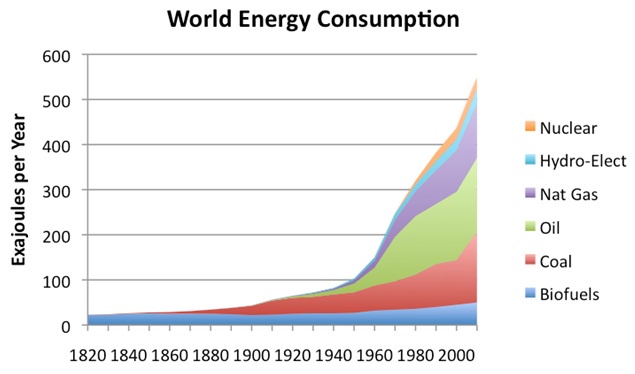This centre is inactive since 2019 and these pages are retained for information purposes.
The World has a clear need and the desire to embrace clean, low energy, low carbon materials, products and technologies in all areas of human activity.
In 200 years we have seen a 30-fold increase in global energy consumption. Most of this energy is derived from fossil fuels (Fig.1). A similar increase in anthropogenic carbon dioxide emissions, the main driver of climate change, has been linked to this voracious appetite for energy. These rates of increase cannot be sustained, on the one hand because of depletion of finite fossil fuel reserves (already evident in higher fuel costs) but more importantly because of the potentially catastrophic effects of climate change if we continue on this path.
Recognising that variations between nations exist, approximately 50% of all primary energy consumption and carbon dioxide emissions are attributed to the construction and operation of buildings, with the balance shared equally between transport and industry. Buildings thus represent the greatest challenge, but they also offer the greatest opportunity and best hope for dramatically (in a relatively short period of time) reducing energy demand and associated carbon dioxide emissions. 
Figure 1:

Figure 1. World Energy Consumption by Source (based on Vaclav Smil estimates from Energy Transitions: History, Requirements and Prospects together with BP Statistical Data for 1965 and subsequent).

